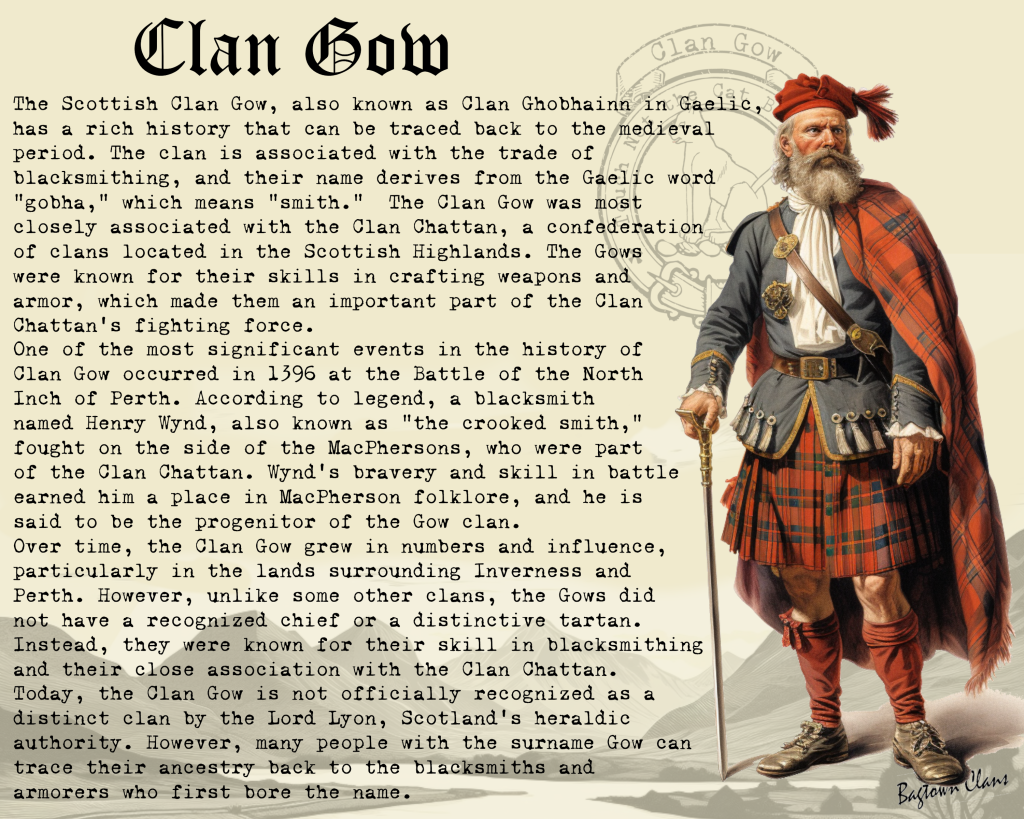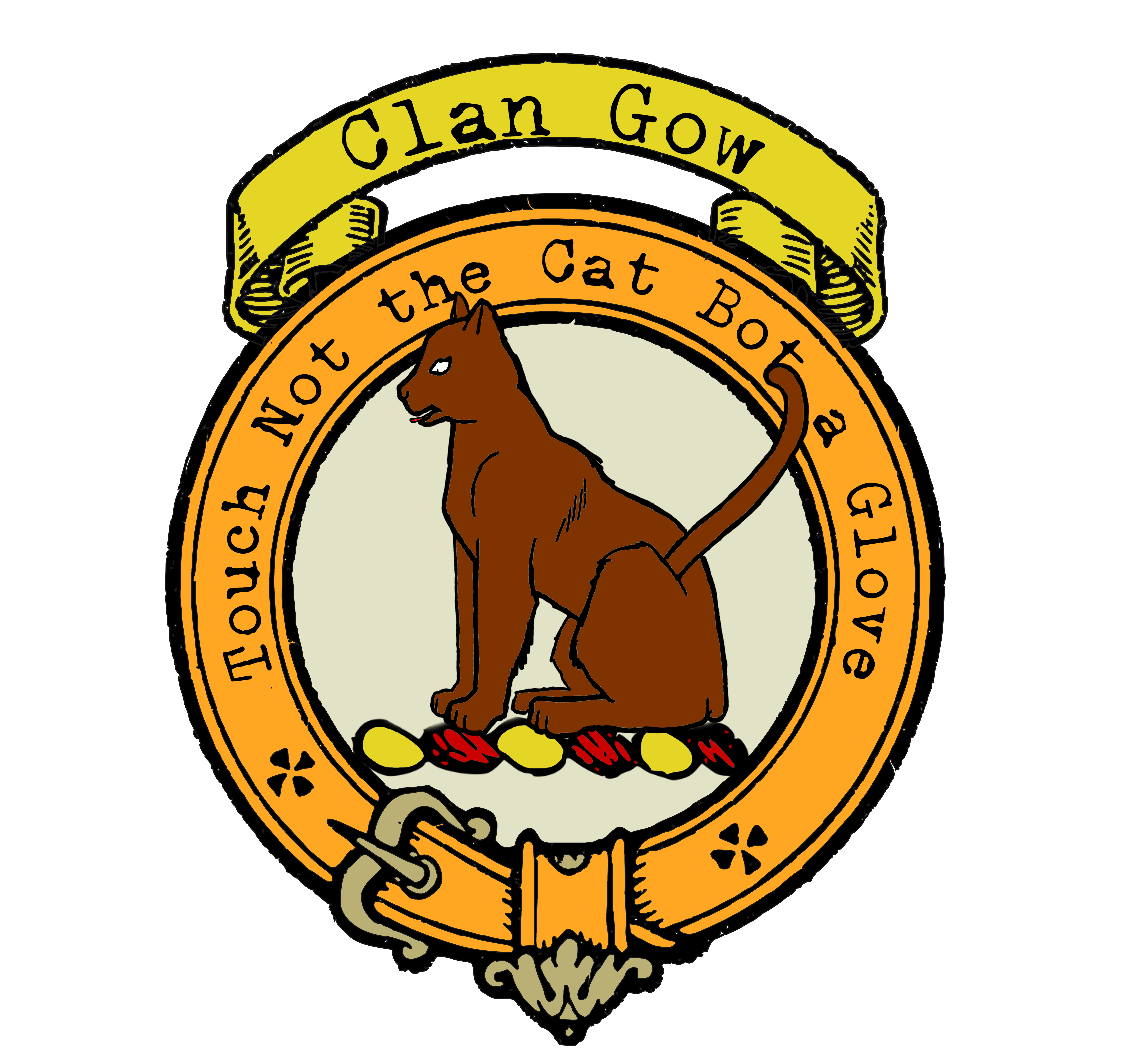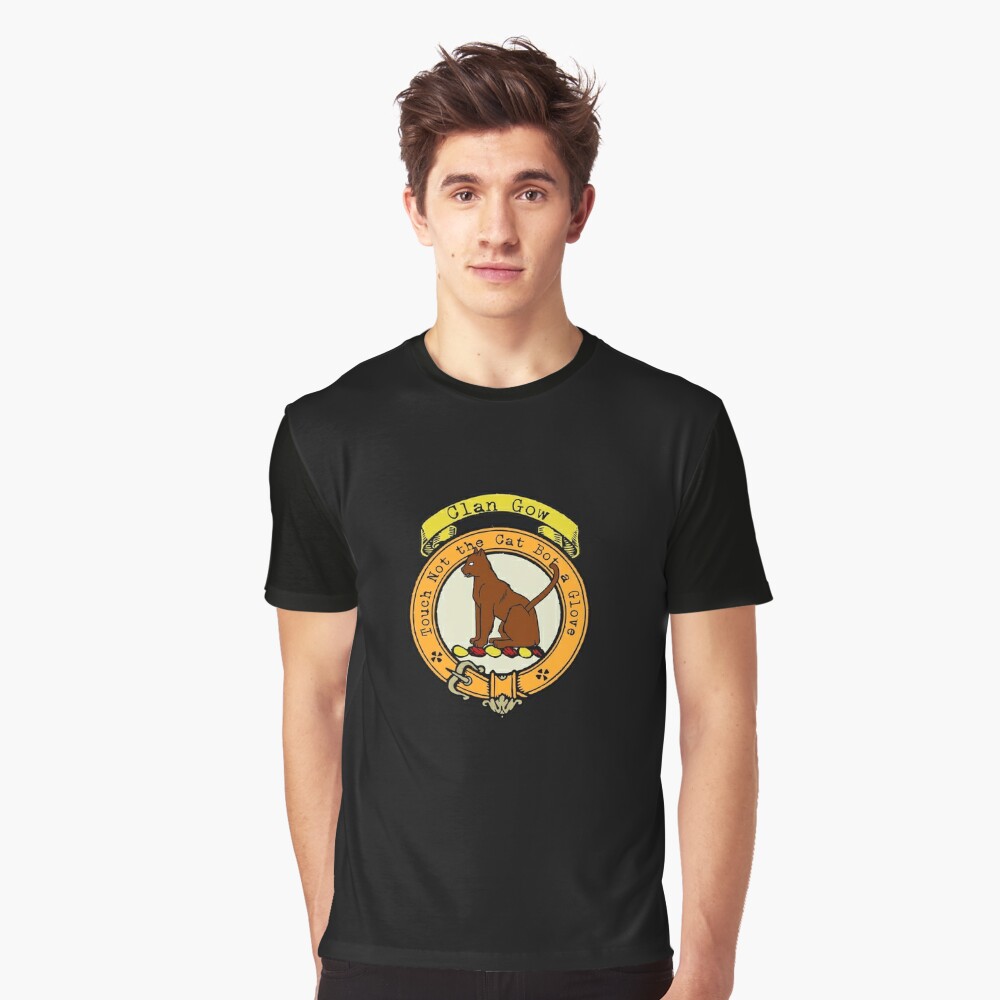Gow Clan
|
|
CREST: A cat sejant, Proper MOTTO: Touch Not the Cat Bot a Glove TRANSLATION: N/A VARIATIONS: MacGowan, McGowan |
| The Scottish Clan Gow, also known as Clan Ghobhainn in Gaelic, has a rich history that can be traced back to the medieval period. The clan is associated with the trade of blacksmithing, and their name derives from the Gaelic word “gobha,” which means “smith.” The Clan Gow was most closely associated with the Clan Chattan, a confederation of clans located in the Scottish Highlands. The Gows were known for their skills in crafting weapons and armor, which made them an important part of the Clan Chattan’s fighting force.
One of the most significant events in the history of Clan Gow occurred in 1396 at the Battle of the North Inch of Perth. According to legend, a blacksmith named Henry Wynd, also known as “the crooked smith,” fought on the side of the MacPhersons, who were part of the Clan Chattan. Wynd’s bravery and skill in battle earned him a place in MacPherson folklore, and he is said to be the progenitor of the Gow clan. Over time, the Clan Gow grew in numbers and influence, particularly in the lands surrounding Inverness and Perth. However, unlike some other clans, the Gows did not have a recognized chief or a distinctive tartan. Instead, they were known for their skill in blacksmithing and their close association with the Clan Chattan. In the 18th century, one member of the Gow family achieved great fame as a musician. Neil Gow, born in 1727, was a renowned fiddler whose compositions and performances earned him the title “Prince of Scottish Fiddlers.” Neil’s son Nathaniel followed in his father’s footsteps, leading a band that was popular across Britain. Together, Neil and Nathaniel published three volumes of their compositions, known simply as “Neil Gow and Son.” Today, the Clan Gow is not officially recognized as a distinct clan by the Lord Lyon, Scotland’s heraldic authority. However, many people with the surname Gow can trace their ancestry back to the blacksmiths and armorers who first bore the name. |
|
Citations:
|
|

Purchase @ Redbubble
Purchase @ Amazon.com
Purchase @ Amazon.co.uk

